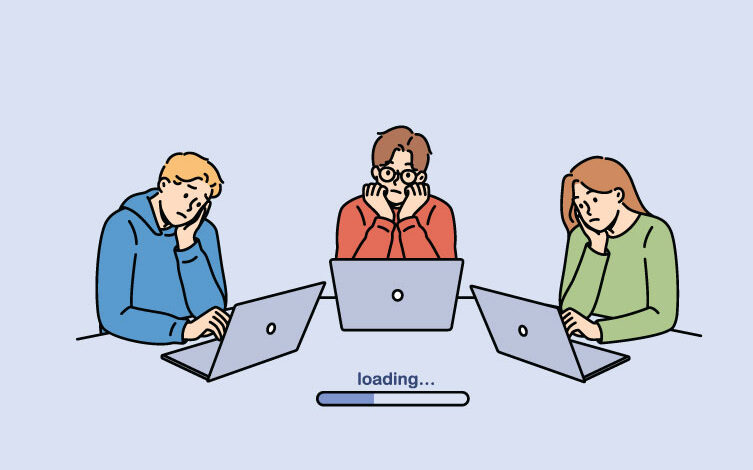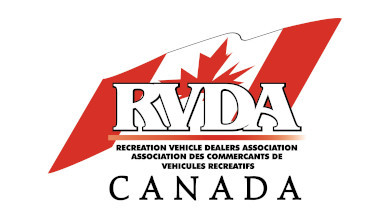Effectively Managing Downtime in Sales
Salespeople can commit to self-development during downtimes to stay sharp and motivated.

Unfortunately, there are many things a salesperson cannot control when they go to work each day. They have no control of their competition, what they sell or how they price their product. Although they might occasionally be able to give their feedback, they often cannot control what product they carry at their dealership, either. They certainly can’t control the economy and interest rates, and although they may have some influence, they cannot control their customer’s reactions.
They also can’t control things that affect the amount of downtime they have each day, from things such as weather and seasonality, major sales events by competitors, holiday seasons (when sales often slow down) or the end of camping season, when most customers are thinking more about storing their RVs than traveling with them.
Having said all that, there is one area where salespeople have more control than they might think, and that’s the decision of how to use their downtime in a productive, educational manner that can help them be better at what they do.
Although some well-run dealerships use these downtimes to schedule trips to manufacturers or do in-house training, there is still a great amount of time left for salespeople to take action themselves to hone skills and techniques that can directly result in more sales and commissions — if they decide to do so.
The best salespeople typically commit fully to self-development in downtime and use it to stay razor sharp going forward. However, far too many of the rest have a tendency not to be self-motivated enough to improve their skills on their own. They simply wait for the dealership to train them and hope that alone will be sufficient.
Many salespeople do the obvious things, like calling customers to get them back in or fine-tuning their notes for the next time a customer comes back in, but that’s where it ends. Too many spend their day talking about the game last night or the party they attended or complaining why the dealership doesn’t do more to create leads for them.
For those who are truly motivated to improve skills and not wait for the dealership to do it for them, there are many high payoff activities salespeople can work on in downtime that will directly improve their chance of getting the sale the next time they work with a customer.
Here are a few training tools to heavily focus on:
Model the Masters
My good friend Jack Daly, one of the best sales trainers in the world, uses the term “model the masters,” where salespeople can simply observe the best salesperson in the dealership closely, what they do and how they do it, to find the tips and tricks they use to be so successful. They didn’t become successful by accident, and observing them and/or getting advice on things they do to be No. 1 is a great start to improve selling skills and customer techniques. Even though salespeople are independent operators in a team environment, most will be more than willing to help fellow salespeople improve their skills and chances of success.
Nail the Greeting
This is one of the most overlooked moments in the selling sequence. Far too many salespeople are unprofessional, sloppy and awkward as they approach a customer for the first time. Many need to refine the first words and practice new things to say to customers in downtime in order to make a better first impression. This is especially true with the anxious, overly sensitive customer who has had a bad salesperson experience. Having a sales manager or other salesperson video those first few minutes and watching it later can reveal verbal or body language adjustments you can do better with the next customer.
Win the Customer First
One of the biggest mistakes salespeople make is to be far too aggressive in order to prove themselves, and in doing so talk way too much. In the early stages, one of the first things customers look for in a salesperson is if they are listening to them when they are talking. The customer has information the salesperson must have to put them on the right product that is in the customer’s budget. Creating an environment where the customer is given the unlimited right to speak comfortably and at their pace is critical to them feeling the comfort and rapport they need to trust the salesperson. One of the first ways they determine this is if they are being heard. If the customer doesn’t feel comfortable and trust the salesperson, there will be no sale that day.
Study Nonverbal Cues
The economy, heavy competition and even a ramped-up political atmosphere has more customers on edge than in past years. Customers are walking into dealerships more nervous and edgy than ever and, as a result, tend to say less than in the past. However, they still communicate with nonverbal cues in a way that is evident for the salesperson who is looking for them. In my latest book, “No Trust, No Sale,” I review the nonverbal cues salespeople need to look for with a quiet, anxious customer. At the very least, understanding these can help validate what the customer is saying verbally, which is also valuable information for the salesperson.
Mastering Product
There are constant updates in product lines and features in RVs. Many salespeople know general information about their product, and can generally present product, but are not at expert levels. This takes an inordinate amount of product study in downtime, and it’s not just your product — it’s also knowing your competitor’s product as well, because it is likely that they have or will visit the dealership down the street for comparison. Knowing specifically why your product is better will help the customer make a better decision on what’s right for them — so get studying and keep studying.
Strategizing Follow-Up Calls
So many salespeople pick up the phone to do a follow-up call with a customer to hit follow-up call quotas required by the dealership without having or reviewing notes (made in the last visit) and developing a strategy on the reason for the call and how the customer will benefit from it. I have listened to audiotapes of those calls and most salespeople are unprepared and awkward, and have no plan, especially with the first few words they say. Customers typically fear these calls and are uncomfortable and jittery, so having a thought-out plan of why you’re calling, what you will say and how customers can benefit from it is a critical step.
Visit Campsite Owners or Managers
Visiting and developing a relationship with the owners/managers of area campsites in downtime periods is a key opportunity only the top 10% of salespeople take advantage of. These people have daily conversations with RVers at their campsites who love talking about their RVs. Campers are always looking at fellow campers’ RVs, and that gets them excited to possibly upgrade in the near future. They also routinely ask campsite managers for recommendations where to go to upgrade their product, who in turn can say they know a salesperson at a dealership or at the very least pass along a business card.
Taking Ownership of Self-Development
The top salespeople across the country wait for no one to train them. They become their own HR managers, take full responsibility for their self-development and stay locked into an ongoing mode of learning. They utilize every minute of downtime to have a plan to improve every day. They replay and review every step they took and every word they said with their last customer to constantly look for ways to be better the next time.
The good news is that this is something every salesperson can do regardless of level of talent or education. All it takes is commitment and dedication to being better every day and to maximize every opportunity to win the customer, making it easier for them to feel comfortable saying yes when they ask for the sale.



